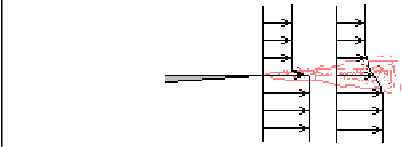
However, in a free turbulent flow, away from walls, the laminar shear
stress is small compared to the turbulent one. This suggests that the
laminar viscosity ![]() can be ignored in the relation above.
(Remember from the energy cascade discussion that the laminar stress
is important in the dissipation of turbulent kinetic energy. But it
should not be involved in the large-scale mechanics of the turbulent
mixing layer, like the instability mechanisms that sustain the big
eddies. If
can be ignored in the relation above.
(Remember from the energy cascade discussion that the laminar stress
is important in the dissipation of turbulent kinetic energy. But it
should not be involved in the large-scale mechanics of the turbulent
mixing layer, like the instability mechanisms that sustain the big
eddies. If ![]() changes, it should only affect at which scales the
energy cascade gets rid of its energy.)
changes, it should only affect at which scales the
energy cascade gets rid of its energy.)
Also, if you look sufficiently far downstream, the details of the initial conditions should no longer be visible.
Dimensional analysis can now be done for the mean velocity profile
![]() above. Selecting
above. Selecting ![]() and
and ![]() to
nondimensionalize the remaining variables gives
to
nondimensionalize the remaining variables gives

Exercise:
Discuss how well that seems to agree with flow visualizations.
Note that while in a boundary layer approximation the mixing layer can reasonably be approximated as relatively thin compared to its streamwise extend, this approximation does not improve with streamwise distance.